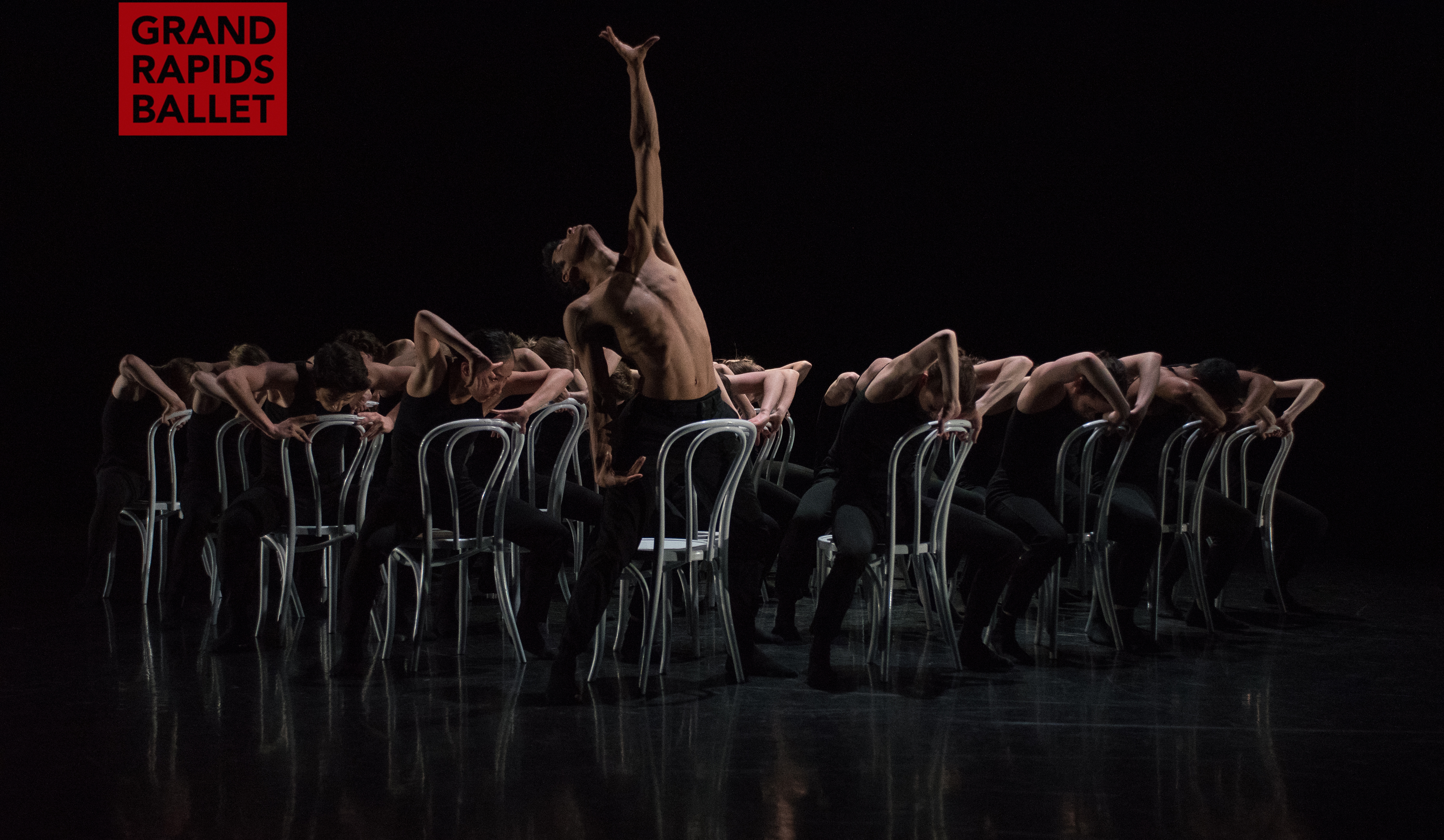Dance has the power to interpret and recreate worlds of experience without explaining or intellectualizing. Without words, it invites us into an experience through the universal language of the body, of movement. When done well, that experience is transcendent, and elicits an emotional response born of communal creation as well as private connection.
In other words, it can allow access to worlds beyond one’s own. And this is exactly what the Grand Rapids Ballet aimed for and ultimately has achieved in MoveMedia: Diversity II, a collection of new dances that opens up largely hidden human suffering in beautiful and elegant ways. The idea — as choreographer Danielle Rowe explained in a short film preceding her piece, “Adam’s Key,” which opened the performance — is the more we understand difference, the more we can appreciate and celebrate difference.
“Adam’s Key” offers a glimpse into the world of an autistic child, especially through the experience of his parents. Set to rhythmic, cinematic music by Alton San Giovanni, highly kinetic and engaging movement reveals an anti-linear narrative full of tremendous tension and beauty in which the parents and caretakers exchange roles with the child, offering support in weight-sharing while motifs such as a slow motion seated rocking forward fold creates a sense of surrender like that of ocean waves amid the sharp and unpredictable chaos represented by flicking and flailing hands and arms that punctuate expressive lengthening, stretching, leaping. The piece ends with the entire cast of 16 dancers in pairs emerging through parted curtains upstage, brightly backlit, with hands covering their eyes. From a cluster they shift into a running circle with percussive slapping of thighs, one by one, breaking out into the center. The effect is inexplicably, deeply moving.
“One,” originally commissioned by Dance St. Louis for Common Thread Contemporary Dance Company in 2013, is Uri Sands’ homage to Henrietta Lacks, a poor, black tobacco farmer and mother of five. Lacks’ cancer cells, taken from her body unbeknownst to her or her family in 1951, became a primary tool in 20th-century medical research, leading to the polio vaccine, in-vitro fertilization, gene mapping, and cloning, among other extraordinary advances.
The dance opens with a barefoot soloist in a flowing grey dress, then one dancer becomes two, two becomes four, and four becomes eight — all of them moving in tandem, replicating themselves as if cells dividing, first hunched over in a bow with upturned arms and hands, then balancing, rotating, mutating, swirling and twirling. They move in a gorgeous cluster with one aberrant. Organized chaos gives way to dance. Of the 16 women dancing on stage, none is discernibly African American, an important absence in this story that is incomplete if not addressing the confluence of race, class and ethics — particularly in an art form perhaps not yet entirely equipped to fully embody those elements. One hopes this can help continue and deepen the conversation about diversity in the arts, who’s telling whose stories, and why.
The final piece in this 90-minute performance is Olivier Wevers’ darkly seductive “Swing,” a glorious attempt to unveil the existential suffering and release of suicide. In a play on musical chairs, and the idea of how each of us finds our place in life, in society with the burden of what we carry, 22 dancers dressed in black march in a militaristic formation and then disperse while each managing their own white chair. A separate figure, representing perhaps death or some other inevitable fate or destiny, shoves dancers off their chairs, shifts and moves them, and otherwise manipulates and creates disturbances and non-conformity in the whole, catalyzing a gorgeous pas de trois. This gives way to a pile of chairs upstage right with a mountain of bodies downstage left that a solitary dancer climbs and then leaps from, with a white chair suspended and circling above. An entrancing pas de deux ensues between Isaac Aoki and Matt Wenckowski, representing a magnificently harrowing dance with death, the mesmerizing desire implicit in the ultimate surrender.
In these three dances, the Grand Rapids Ballet not only presents innovative work executed exquisitely, they also offer moving experiences that elicit emotion and insight into very real suffering that also yields to beauty. What they’ve done in this second installment of their MoveMedia: Diversity series is surprising, bold, risky, and remarkably moving in the most artful of ways.
MoveMedia: Diversity II
Grand Rapids Ballet
March 23-25
grballet.com





